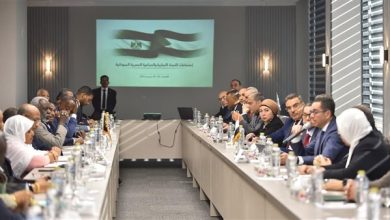Africorp Group reports: Sudan’s Agricultural Landscape (1-2)

Summer 2023/2024 Harvest Season
The April 15, 2023, War in Sudan:
Amidst the ongoing fighting between the Sudan Armed Forces (SAF) and the rebel Rapid Support Forces (RSF) that erupted on April 15, 2023, the exhausted nation’s economy is experiencing a noticeable decline. A majority of both public and private sectors in production have been incapacitated, falling victim to extensive looting and destruction in the initial months of the conflict. Notably affected are major corporations, factories, financial institutions, agriculture, and the country’s export industry.
The disruption of the operations in prominent industrial entities has resulted in a contraction of export activities, particularly impacting the agricultural sector. Escalating prices of commodities, depreciation of the local currency, and the widening scope of the conflict to encompass regions of Darfur and Kordofan, which contribute well over 50% of Sudan’s total exports of oilseeds (sesame, peanut, and watermelon seeds), gums and herbs (hibiscus and senna pods) and livestock, have collectively contributed to the degradation of transportation and logistical services.
The widespread destruction and disruption of critical markets and transport routes in Sudan, as well as in neighboring South Sudan, Chad, Ethiopia, and Eritrea, are anticipated to persist, causing intermittent deliveries, restricting quantities and varieties, and keeping food prices elevated during the pre-harvest months of October 2023. Given the expected decrease in harvest yields due to the impact of conflict, as well as rainfall and climatological anomalies on crop production, prices are likely to remain unusually high throughout the harvest and post-harvest period from October 2023 to February 2024, extending throughout the entire projection period.
The increased complexity of export movements now poses a significant risk of agricultural products seeping into neighboring countries, namely Chad and South Sudan, as well as Egypt. The total exports of Sudan reached $530 million by the end of October, compared to $2.90 billion from the previous year. The direct causes can be attributed to:
1. The relocation of companies and factories from their primary sites, leading to the cessation of operational activities.
2. Difficulty in transporting products from production and processing sites to export ports.
3. Deterioration of banking services and the suspension of central bank branches and
financial institutions.
4. Disruption of state apparatuses performing administrative and technical services related
to export activities.
On a positive note, there have been reports of an improvement in banking services after the central bank resumed operations in the city of Port Sudan. Some banks have relocated their headquarters to Port Sudan, successfully recovering financial data for clients and resuming a significant portion of operations.
The Export Industry Infrastructure Destroyed or not Accessible:
The challenge of preparing agricultural products for export, involving sorting, sieving, and packaging, poses a fundamental dilemma for export companies, particularly given the concentration of processing facilities and equipment in Khartoum state. Primary processing centers are located in the Soba Industrial Area, Souq Mahali in Khartoum, Sabaloga, Halaib area, Souq Ash-shabbi in Omdurman, the Garri Free Zone and Industrial Area in Khartoum Bahri, and Bagair Industrial Area in neighboring Gezira state south of Khartoum state, with available services such as electricity, water, and skilled labor. Since April 15, these locations have seen discontinuation of operations. Stocks stored over there were looted with only small quantities relocated at both a high security risk and a higher cost. This challenge becomes an issue that exporters confront, leading
1. Decreased export quantities to the global market and a decline in the quality of operations due to reliance on untrained labor with increased associated costs.
2. Elevated costs of site rentals, manual operation equipment, sorting, and sieving processes.
Consequently, the operational costs increase, and the returns from exports decline, negatively impacting Sudan’s overall economy. Despite the challenges in Khartoum, Central and the Eastern Sudan regions remain viable options for continuing processing operations. These regions host sieving and sorting equipment for crops, cotton mills, and oil pressing factories, in addition to dedicated processing sites. Cities such as Al-Gedaref in Eastern Sudan and Wad Medani in the Central region are witnessing security stability and an abundance of manual labor, facilitating the continuity of crop processing operations, making them attractive destinations for export companies.
Summer Season 2023/2024 Rainfall and Cultivated Area:
Methodology: Africorp Group (ACG) has consistently strived to provide data about the Sudanese summer agricultural season, and it remains committed to this endeavor despite the ongoing conflict that has impacted the entire country. Traditionally, the Federal Ministry of Agriculture of Sudan has been the primary data source in previous years. However, due to the current conflict, no data was released by the ministry this season. In the absence of official data, this report relies on information shared by the states’ ministries of agriculture in the East, Central, and Southeast regions of the country, along with contributions from international organizations such as FAO, IFAD, and the World Food Program (WFP). Additionally, ACG has actively engaged its network, including farmers’ associations, suppliers, and local branches in various regions, to gather information for this report.
Finally, the report has been compiled by ACG’s head office Task Force. Despite these extensive efforts, it is important to note that the collected data is presented as estimates and may not be entirely accurate, reaching only an approximation of the actual figures.
Rainfall: The seasonal rains from June to September commenced on time, marked by above average the rainfall in June, especially in central and western areas of the country. According to reports from Food and Agriculture Organization (FAO), desert locusts have been observed in northern Sudan and neighboring countries, including Ethiopia, but not in substantial quantities. Despite the overall cumulative rainfall being mostly average to above average from June to early September, the quality of the season has been adversely influenced by intermittent localized dry
spells, deficits in rainfall, and higher-than-normal temperatures in July to August, particularly in the northern and central regions. However, the primary factor likely to lead to below-average crop yields is the ongoing conflict.
In the traditionally highly productive eastern region, the conflict has disrupted the banking system, services, and trade flows, negatively impacting the availability of credit and access to
Cultivated area: The overall planted area for all crops in the summer season is estimated to be 15% lower than the annual average. Harvests are anticipated to be below average and lower than last year, particularly in areas near regions of intense conflict, where significantly below-average harvests are expected.
Rural areas near heavily affected urban centers in Greater Darfur and Greater Kordofan, as well as parts of the semi-mechanized and irrigated sectors, have reported cultivation below normal levels at the beginning of the season, below-average crop production throughout the season, and often an inability to harvest due to the conflict. Available data on cultivated area extent suggest a reduction of at least 20%, and in some cases up to 35%, compared to the five-year average (DataQ, October 2023).



